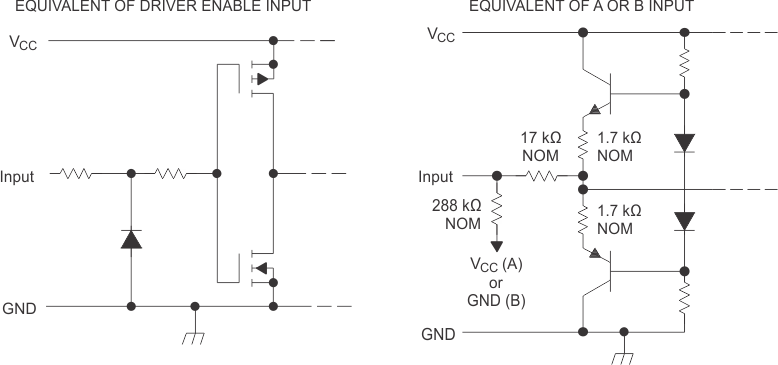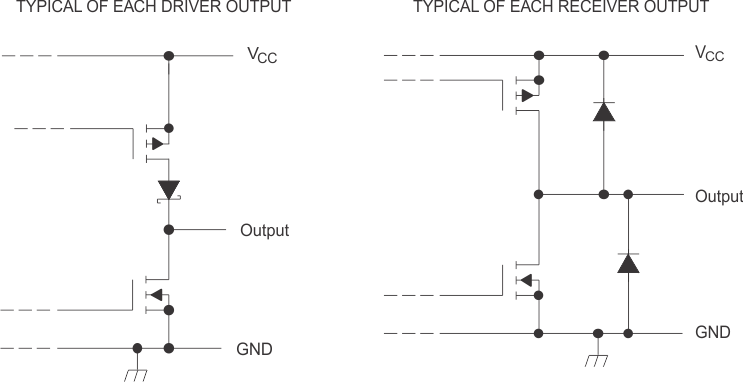ZHCSK15 July 2019 SN65C1168E-SEP
PRODUCTION DATA.
9.1 Application Information
Figure 7 shows a typical RS-422 application. One transmitter is able to broadcast to multiple receiving nodes connected together over a shared differential bus. Twisted-pair cabling with a controlled differential impedance is used, and a termination resistance is placed at the farthest receive end of the cable in order to match the transmission line impedance and minimize signal reflections.
 Figure 7. Schematic of Inputs
Figure 7. Schematic of Inputs  Figure 8. Schematic of Outputs
Figure 8. Schematic of Outputs